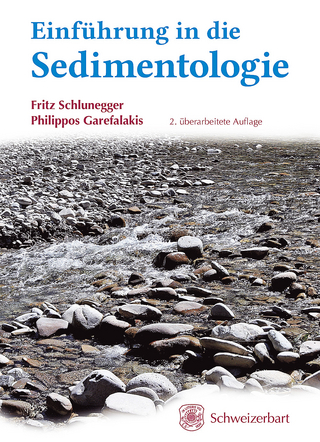
Unconventional Reservoir Geomechanics
Cambridge University Press (Verlag)
978-1-107-08707-1 (ISBN)
Since the beginning of the US shale gas revolution in 2005, the development of unconventional oil and gas resources has gathered tremendous pace around the world. This book provides a comprehensive overview of the key geologic, geophysical, and engineering principles that govern the development of unconventional reservoirs. The book begins with a detailed characterization of unconventional reservoir rocks: their composition and microstructure, mechanical properties, and the processes controlling fault slip and fluid flow. A discussion of geomechanical principles follows, including the state of stress, pore pressure, and the importance of fractures and faults. After reviewing the fundamentals of horizontal drilling, multi-stage hydraulic fracturing, and stimulation of slip on pre-existing faults, the key factors impacting hydrocarbon production are explored. The final chapters cover environmental impacts and how to mitigate hazards associated with induced seismicity. This text provides an essential overview for students, researchers, and industry professionals interested in unconventional reservoirs.
Mark D. Zoback is the Benjamin M. Page Professor of Geophysics at Stanford University, California. He conducts research on in situ stress, fault mechanics, and reservoir geomechanics with an emphasis on shale gas, tight gas and tight oil production. His first book, Reservoir Geomechanics (Cambridge, 2007) is now in its 15th printing. His online course in reservoir geomechanics has been completed by approximately 10,000 students around the world. Dr Zoback has received a number of awards and honors, including election to the US National Academy of Engineering. Arjun H. Kohli is a Research Scientist and Lecturer in the Department of Geophysics at Stanford University, California. He conducts research on earthquake physics to understand the behavior of plate boundary faults and the occurrence of induced seismicity. He co-developed two massively open online courses on geomechanics, including interactive assignments designed for students with diverse backgrounds ranging from high school to industry professionals.
Part I. Physical Properties of Unconventional Reservoirs: 1. Introduction; 2. Composition, fabric, elastic properties and anisotropy; 3. Strength and ductility; 4. Frictional properties; 5. Pore networks and pore fluids; 6. Flow and sorption; 7. Stress, pore pressure, fractures and faults; Part II. Stimulating Production from Unconventional Rservoirs: 8. Horizontal drilling and multi-stage hydraulic fracturing; 9. Reservoir seismology; 10. Induced shear slip during hydraulic fracturing; 11. Geomechanics and stimulation optimization; 12. Production and depletion; Part III. Environmental Impacts and Induced Seismicity: 13. Environmental impacts and induced seismicity; 14. Managing the risk of injection-induced seismicity; References; Index.
| Erscheinungsdatum | 17.05.2019 |
|---|---|
| Zusatzinfo | 19 Tables, black and white; 30 Maps; 86 Halftones, black and white; 187 Line drawings, black and white |
| Verlagsort | Cambridge |
| Sprache | englisch |
| Maße | 180 x 255 mm |
| Gewicht | 1140 g |
| Themenwelt | Naturwissenschaften ► Geowissenschaften ► Geologie |
| Naturwissenschaften ► Geowissenschaften ► Geophysik | |
| Technik ► Bauwesen | |
| Technik ► Elektrotechnik / Energietechnik | |
| Wirtschaft | |
| ISBN-10 | 1-107-08707-4 / 1107087074 |
| ISBN-13 | 978-1-107-08707-1 / 9781107087071 |
| Zustand | Neuware |
| Haben Sie eine Frage zum Produkt? |
aus dem Bereich


